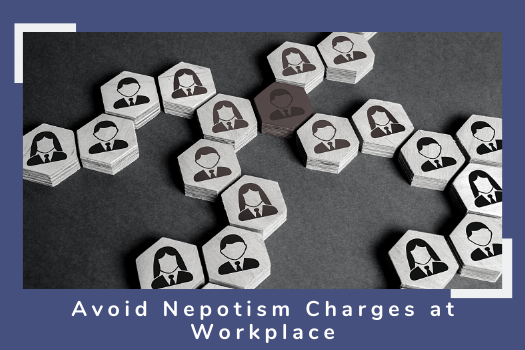That time of the Year - Appreciation, Rewards and Heartbreaks
Employee Engagement, Employee Relations, Rewards and Recognition
It’s appraisal time. It is that time of the year when employees in Corporate India get evaluated and rewarded for their performance of previous year. This phase of performance evaluation usually expose many internal processes of companies, such as,
- Credibility of performance management system,
- Warmth in relationships of managers with their sub-ordinates,
- Effectiveness and quality of internal communication,
- Compensation and benefit structure, and
- Validity of succession planning processes.
While going through evaluation process, many unsatisfied employees begin to search for new jobs. Keeping control on attrition rate has been biggest challenge for many HR Heads across companies. I don’t advocate for 0% attrition rate. Some attrition is good for company. Many a time, poor performers are not given good increments because companies want them to leave. I am more concerned about my high-potential and high-performing employees. Loosing these people to competition is really painful. Replacing your high-potential and high-performing employees put a big dent in your budget. While one size doesn’t fit all, HR needs to analyse attrition trends in their companies. They must have answers for following questions –
- Who are the employees that are leaving the company – non-performers or high-performers?
- What’s been their tenure with the company?
- Which department or function do they belongs to?
- What is their age group?
While working on retention strategies, I understand that monetary benefits play an important role; however, I also understand that not all employees look for monetary benefits. Company culture, relationship with reporting manager and internal communication plays very important role in employee retention. Many Indian companies do not have clear compensation and benefit policies, which often led to irritation and frustration followed by dissatisfaction and attrition. Many employees don’t know what they need to do to get A+ rating in their performance review. Another challenge that HR-Head’s usually phase is fixed budget for increments, which is often linked with company performance and growth. No matter how an employee performs, his increment will usually be in the range of 0-20%. In order to retain high-potential and high-performing employees, HR’s must get innovative with non-monetary benefits. I am discussing SEVEN retention strategies which are innovative as well as effective -
- Work-Life Balance - Fixed working hours and working weeks are still valid and acceptable to many employees. It increases productivity, stability and retention. On other hand, long and uneven working hours decreases productivity and adversely impacts employee health. When we work with a deadline in our mind, we often have given our best. Employees stay healthy and productive when give quality time to their families. In our company, we work from 8 AM to 5 PM and from Monday to Friday.
- Growth and Development Plans - Why would any employee worth his (or her) salt stay with an employer where jobs are dead ends? Visible career paths provide concrete evidence of an employer's commitment to the value of workers and their development. Clear advancement opportunities tied (through workforce planning) to the business's future talent and skills needs also speak to logical plans that drive organizational longevity and success. Given that scenario, what valued employee would want to leave? Show them the path, share responsibility for growth and development and they will stay with you. Ask them if they are looking for vertical growth or horizontal growth.
- Performance Coaching and Mentoring - Usually, people don’t want to earn free salary. They want to earn their living. Sometimes they don’t have required competence but many times they don’t get coached to perform efficiently. I have seen many employees who are not aware of their capabilities and potential. They remain underutilized. On another hand, there are employees who have skills and potential but they don’t have clear priorities. They need mentoring. HR’s can be internal performance coaches and mentors for employees.
- Company Culture - HR’s must help companies to create culture where employees can give their best. Employees must be given all tools necessary for great performance. A workplace that brings out the best in managers and employees is what successful talent retention is all about. Who among us would choose to leave a job where we felt our potential was recognized, valued, and nurtured? In high-performance organizations, that simple maxim is not just understood, it defines the culture. And it drives development of internal talent pools to feed succession pipelines for leadership and for critical roles at all organizational levels--again underscoring the potential for career longevity and helping drive talent retention.
- Accountability and Empowerment -Usually, employees prefer to take decisions related to their work. Help them take right decision. Don’t take decisions for them. In high-performance organizations, employees are given the freedom, and the trust it implies, to accomplish work in their own ways. Organizations that offer engaging work, freedom to innovate, and trust employees to perform capably can look forward to creative workers who are engaged in their jobs and happy to stay with the company.
- Engage their families - There are several activities where companies can involve and engage with families of employees, such as, testing products, marketing campaigns, events and even in CSR activities. When an employee works late into the evening or during the weekend, send a handwritten note to the employee's spouse to thank him or her for donating family time to the firm and to emphasize the employee's critical role in accomplishing something important for the firm. There is a Company that I have worked for, every year they use to establish summer camp for children of employees. Although the camp primarily engages in fun activities, like any other summer camp, children were kept physically active with health and wellness being a key part of many of the activities.
- Show them the money and show them how to get it - As mentioned earlier,financial growth is certainly one of the key parameters for any retention program. Companies must prepare authentic and viable performance incentive plans. Many companies follow the salary structure of fixed and variable components in their CTC. However, not all companies pass-on variable component to their employees. Most of the times companies don’t have any structure to calculate variable performance bonus or incentive. At the end, it is left on the whims and desires of managers. Therefore, don’t just show them the money but also show them the way to get there.
At the end, neither does you need to retain all employees nor all employees are retainable but you must have viable plans to retain your high-potential and high-performing employees. Non-performers will always be shown the door. As they say, you are as good as your last performance. However, companies must step out of their comfort zone to retain their high-performers and high potentials, even during difficult economic conditions. Monetary growth is important but it is not everything. Employees stay with companies when they are challenged, empowered and are given opportunities to grow.






